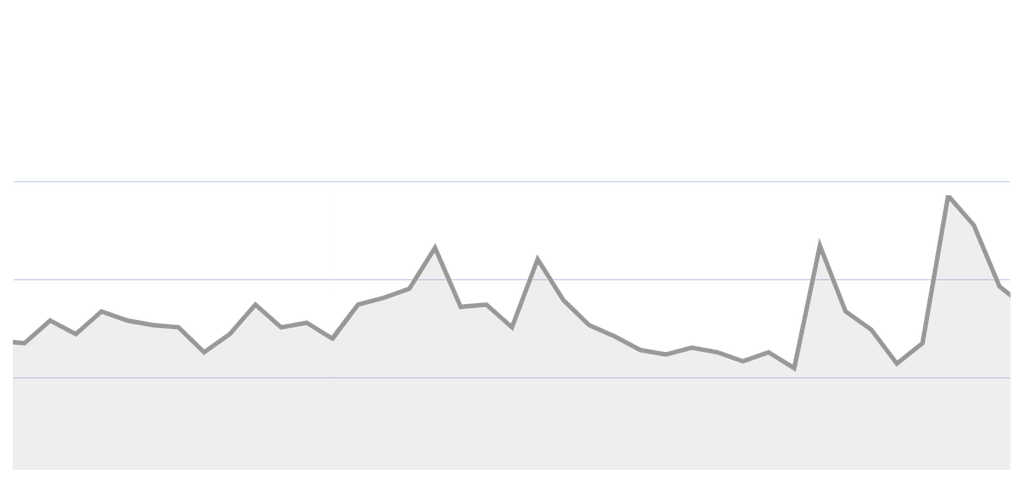What Is Handshake (HNS)?
HNS is the native token of Handshake, which is a permissionless naming protocol. In other words, it is a platform that rewards a network of computers that operate and manage a novel domain name ownership system. If you want to see the current HNS price, take a look at the Handshake price chart above.
The Internet Corporation for Assigned Names and Numbers (ICANN), established in 1998, has been in charge of setting criteria for acceptable domain name letter combinations (such as .com, .org, and so on). Handshake intends to replace ICANN as the primary body in charge of creating and distributing top-level domains through the use of an open auction system managed by its computing network.
How Does Handshake Work?
Handshake has a network of peers who are tasked with managing and validating the root DNS naming zone. The DNS root zone is the top-level zone in the hierarchical namespace of the DNS. Handshake aims to decentralize it, this way decentralizing domain name registration and authentication.
Domain names that are available on Handshake can be bought via top-level domain auctions that take place every two weeks. A Vickrey auction method is used to choose the winning bidder, who then pays the second-highest price. The Handshake software manages all of these auctions automatically.
However, users can also create their own auctions for new domain names. Though they first have to check if the name is available and send a special transaction to the Handshake network.
Besides, note that, apart from using Handshake’s domain names for website creation, they can also be used as crypto wallet addresses.
In terms of the consensus mechanism, Handshake utilizes Proof-of-Work (PoW). Thus, it has a network of miners who have to solve difficult mathematical equations in order to create new blocks. Handshake miners are rewarded with 2,000 HNS every 10 minutes for their work.
Additionally, Handshake uses the unspent transaction output (UTXO) model. A UTXO is an output from a previous transaction that can be utilized as input in a subsequent transaction. UTXOs essentially indicate the beginning and end of each blockchain transaction. You can think of it as the change you get after making a purchase, which you can then use for the following purchase.
Both UTXO and PoW are responsible for securing the Handshake network.
Who Founded Handshake?
The Handshake crypto project was launched in 2020 by Joseph Poon and Andrew Lee.
Joseph Poon was the one who came up with the whole idea of Handshake. He is also the co-founder of the Lightning Network and Plasma. Besides, before joining the crypto industry, Poon was an accountant at Big Four.
Andrew Lee is the co-founder and the CTO of Handshake. Apart from this project, he also founded Purse. Additionally, in the past, Lee worked at an investment management company called Merrill Lynch.
The Purpose of HNS Tokens
Domain name transfers, registrations, and updates are the principal uses of Handshake coins. Additionally, as previously noted, HNS coins are utilized to participate in Handshake's top-level domain auctions. Besides that, HNS coins are also given to PoW miners as compensation for their efforts.
If you’re curious about the current HNS price, don’t forget to take a look at the Handshake price chart above.
Tokenomics of HNS
The max supply of HNS tokens is 2.04 billion. The initial coin offering (ICO) for Handshake coins took place in 2018 and managed to raise $10,2 million.
15% of the initial HNS token supply was reserved for Handshake investors and developers. Following that, 68% of the supply was divided among open-source developers. Lastly, to promote the adoption of Handshake's new method, the remaining sum was divided among the proprietors of the most popular websites on the internet, ICANN, and Certificate Authorities (CAs).
If you've made the decision to buy HNS tokens, bear in mind that the Handshake price fluctuates frequently. Look at the price chart provided above to see the key trends in the HNS price changes.





These are the project's quantitative metrics of its official X account that can be used to trace regular or artificial Social activity & growth within the project.
Followers
23.04K
Followers: 23,045
0.01%
Following
238
0.00%
Posts count
650
0.31%
These are the project's quantitative metrics of its official Reddit account that can be used to trace regular or artificial Social activity & growth within the project.
Subscribers
3.79K
Subscribers: 3,791
0.00%
Subreddit type
public
Moderators
3
0.00%
These are the project's quantitative metrics of its official Telegram account that can be used to trace regular or artificial Social activity & growth within the project.
Members
3.62K
Members: 3,624
0.60%
Title
Handshake (HNS)
These are the project website's metrics based on Ahrefs Rank. They're used to trace website activity & growth within the project. DR (Domain Rating) metric is a sign of the project's website reputability that is ranked from 0 to 100 (the higher the rank, the better reputability). Organic Traffic - is a metric of how many monthly users visit the project's website via search engines. All these metrics are used for determining active or passive projects despite the artificial hype.
Website Rating (DR)
70 / 100
0.00%
Ahrefs Rank
94,315
3.14%
Organic Traffic (mo.)
169
2.42%
These are the project's quantitative metrics of its Organizational GitHub Public account that can be used to trace regular or artificial development activity & growth within the project.
Public repos
24
Type
Organization
These are the project's quantitative metrics of its official GitHub Public Repositories that can be used to trace regular or artificial development activity, growth & popularity of the project.
Stars
-
Watchers
-
Forks
-
Language
-
Currently, official Handshake (HNS) GitHub Public Repository doesn't exist or wasn't submitted. 🔆 Submit Now
r/handshake hot topics
@hns posts